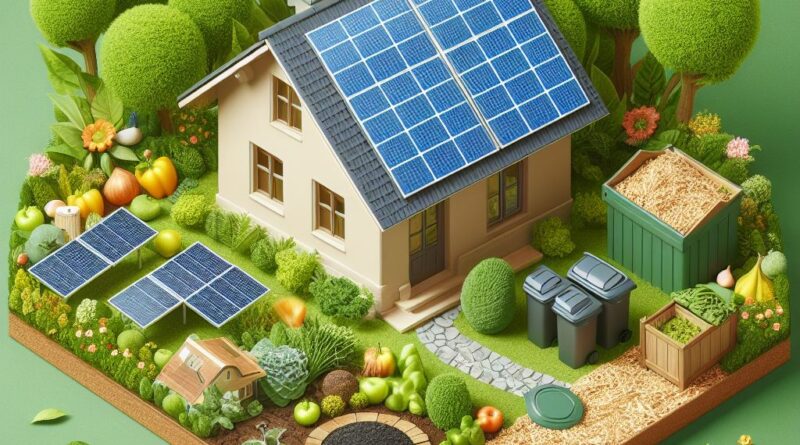5 Best Cost-Effective Eco-Friendly Home Improvement Ideas
This post may contain affiliate links which means I may receive a commission for purchases made through links. As an Amazon Associate, I earn from qualifying purchases. Learn more on my Private Policy page.
Looking to make your home more environmentally friendly without breaking the bank? With so many cost-effective eco-friendly home improvement ideas out there, it can be hard to know where to start.
But what if you could save money and reduce your environmental impact at the same time? In this discussion, we’ll uncover five of the best cost-effective eco-friendly home improvement ideas that not only benefit the planet but also your wallet.
Energy-Efficient Lighting Upgrades
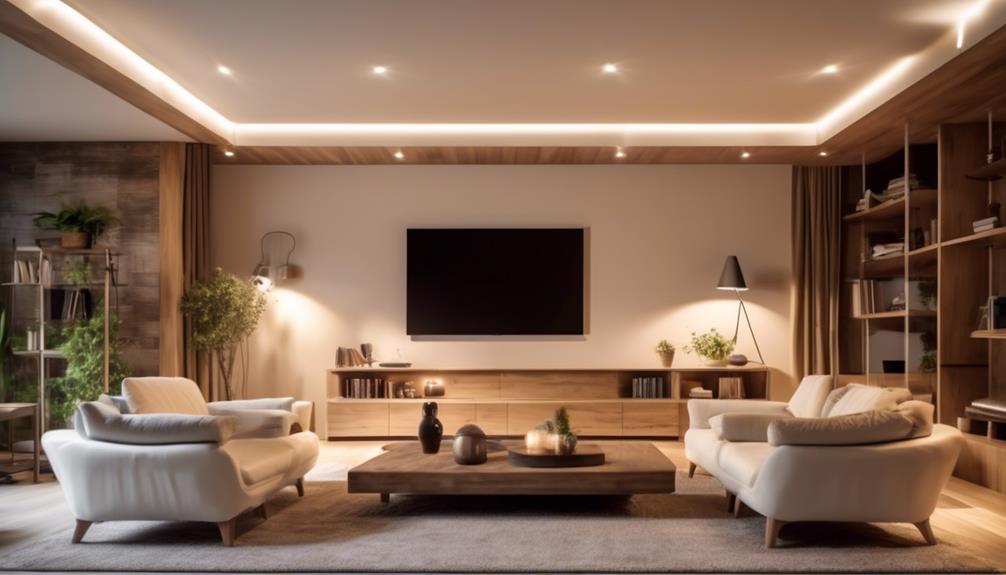
Upgrade your home’s lighting to energy-efficient options to reduce your energy consumption and lower your electricity bills. Consider LED lighting installation and energy-efficient bulbs as a cost-effective way to illuminate your living spaces while saving on energy. LED bulbs use significantly less energy than traditional incandescent bulbs, and they last much longer, making them a smart choice for environmentally conscious homeowners. Not only do they reduce your carbon footprint, but they also cut down on your electricity costs in the long run.
Another option to explore is solar panel implementation for sustainable energy. By harnessing the power of the sun, you can generate your own electricity and significantly reduce your reliance on traditional energy sources. With solar panels, you can’t only power your lighting but also other appliances and electronics in your home, further decreasing your energy consumption and environmental impact. Additionally, many governments offer incentives and rebates for installing solar panels, making the initial investment more manageable and providing long-term savings on your energy bills.
Incorporating these energy-efficient lighting upgrades into your home not only benefits the environment but also helps you save money in the long term. By making these changes, you can take a significant step towards creating a more sustainable and eco-friendly living space.
Water-Saving Plumbing Fixtures
Considering your commitment to reducing your environmental impact and saving on household expenses, it’s essential to explore the installation of water-saving plumbing fixtures as another step towards creating a more eco-friendly home.
One cost-effective and eco-friendly option to consider is greywater recycling. Greywater is gently used water from bathroom sinks, showers, tubs, and washing machines. By installing a greywater recycling system, you can reuse this water for irrigation, flushing toilets, and other non-potable uses, reducing your overall water consumption. This not only conserves water but also lowers your utility bills.
Another vital aspect to consider in water-saving plumbing fixtures is drought-resistant landscaping. By incorporating this type of landscaping, you can reduce the need for excessive watering. Drought-resistant plants and landscaping design can significantly decrease outdoor water usage, contributing to a more sustainable and eco-friendly home environment.
Additionally, consider installing low-flow toilets, faucets, and showerheads. These fixtures are designed to use significantly less water without sacrificing performance, helping you save on water usage and costs.
Low VOC Paints and Finishes
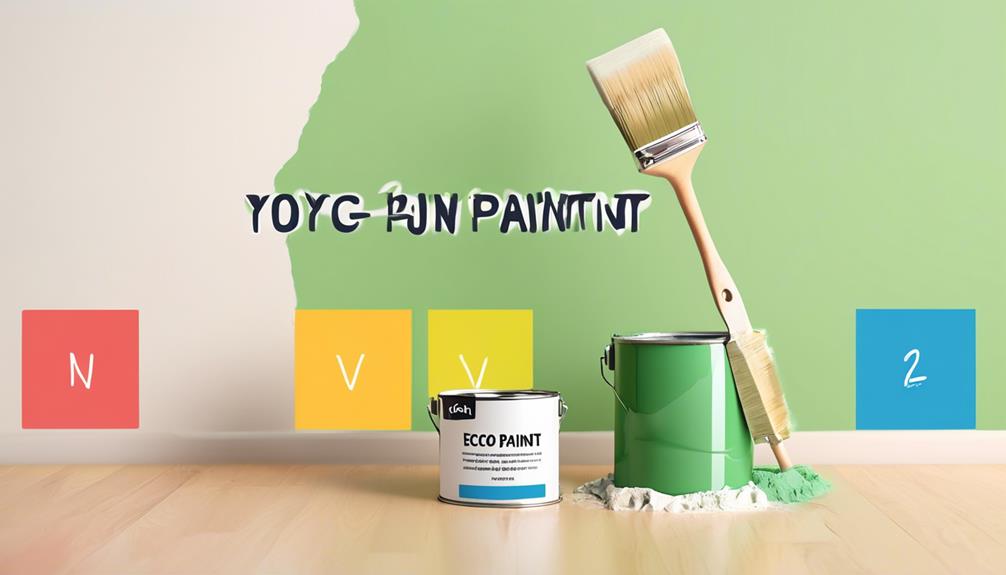
When selecting paints and finishes for your home improvement projects, prioritize low VOC options to minimize indoor air pollution and promote a healthier living environment. Volatile organic compounds (VOCs) are chemicals found in many traditional paints and finishes that can evaporate into the air, contributing to indoor air pollution. Low VOC paints and finishes contain significantly lower levels of these harmful chemicals, which can greatly improve indoor air quality and provide various health benefits.
Indoor air quality is a crucial aspect of your living space, as it directly impacts your respiratory health, overall well-being, and comfort. Low VOC paints and finishes help reduce indoor air pollution, minimizing the risk of respiratory issues, headaches, dizziness, and other health concerns associated with prolonged exposure to high levels of VOCs. By choosing low VOC options, you can create a healthier indoor environment for you and your family.
In addition to improving indoor air quality, low VOC paints and finishes also offer aesthetic and practical advantages. You can find a wide range of low VOC products in various colors, finishes, and types, allowing you to enhance your living space while being environmentally conscious. These eco-friendly options are durable, easy to clean, and contribute to sustainable living practices.
Prioritizing low VOC paints and finishes in your home improvement projects not only promotes a healthier living environment but also aligns with sustainable and eco-friendly practices, making it a cost-effective and impactful choice for your home.
Sustainable Flooring Options
Consider incorporating sustainable flooring options into your home improvement projects to promote environmental responsibility and enhance the longevity of your living space. When it comes to sustainable flooring, bamboo and cork are excellent choices that offer durability, style, and eco-friendliness.
Bamboo flooring is a popular sustainable option due to its rapid growth and renewability. It’s a sturdy and resilient material, making it an ideal choice for high-traffic areas in your home. Bamboo also has a unique and contemporary look that can add a touch of elegance to any room. Additionally, bamboo flooring is relatively easy to maintain and is resistant to moisture, making it suitable for kitchens and bathrooms.
Cork flooring is another sustainable option that provides both comfort and eco-friendliness. Cork is harvested from the bark of cork oak trees, allowing the trees to continue growing and producing more cork. This renewable harvesting process makes cork an environmentally responsible choice. Cork flooring is known for its natural insulating properties, providing warmth and comfort underfoot. It also has a natural resistance to mold, mildew, and pests, making it a great option for promoting a healthy indoor environment.
Both bamboo and cork flooring options offer a sustainable and stylish solution for your home while reducing your environmental footprint. By choosing these eco-friendly flooring options, you can enjoy a beautiful and long-lasting floor while contributing to a more sustainable future.
DIY Insulation and Weatherization
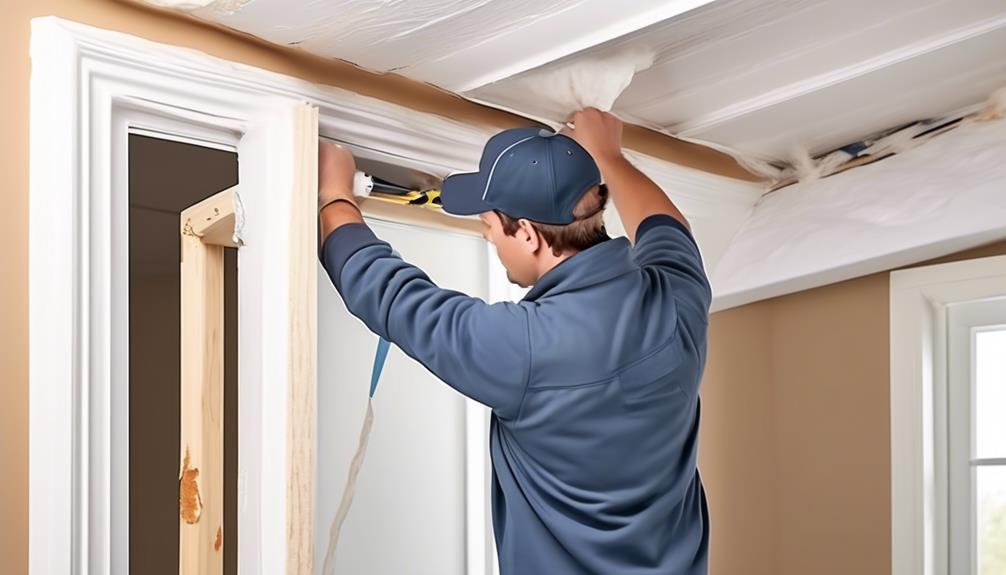
To further enhance the sustainability of your living space, explore DIY insulation and weatherization techniques that can complement the eco-friendly flooring options you’ve chosen. By taking on these projects yourself, you not only save money but also reduce energy consumption and contribute to a greener environment.
Here are some emotional aspects to consider when embarking on DIY insulation and weatherization:
- Comfort: Proper insulation and weatherization can significantly improve the comfort of your home by maintaining a consistent temperature throughout, eliminating drafts, and reducing noise from outside.
- Cost savings: The installation of insulation and weatherization techniques can lead to substantial cost savings on your energy bills. This can alleviate financial stress and provide peace of mind knowing that you’re being mindful of your expenses.
- Environmental impact: By improving the energy efficiency of your home through insulation installation and weatherization techniques, you’re actively reducing your carbon footprint and contributing to environmental conservation. This can evoke a sense of pride and fulfillment in knowing that you’re making a positive difference for the planet.
Eco-Friendly Landscaping Projects
Looking to enhance the sustainability of your outdoor space? Eco-friendly landscaping projects offer a great way to create a beautiful and environmentally conscious garden.
One effective approach is to incorporate drought-resistant plants into your landscape. These plants require minimal watering, reducing the overall water consumption of your garden and ensuring that your outdoor space remains vibrant and healthy even in dry conditions. Consider native plants like lavender, yarrow, and Russian sage, which are well-adapted to local climate conditions and require less water to thrive.
Another eco-friendly landscaping project to consider is implementing composting techniques. Composting not only reduces the amount of waste sent to landfills but also creates nutrient-rich soil for your garden. By composting kitchen scraps, yard waste, and other organic materials, you can enrich the soil, improve its water retention, and promote healthy plant growth without relying on chemical fertilizers. Additionally, it reduces the need for synthetic fertilizers, which can have harmful effects on the environment.
Incorporating both drought-resistant plants and composting techniques into your landscaping not only benefits the environment but also saves you time and money in the long run. By making these eco-friendly choices, you can create a sustainable and visually appealing outdoor space while minimizing your environmental impact.
Upcycled and Recycled Furniture
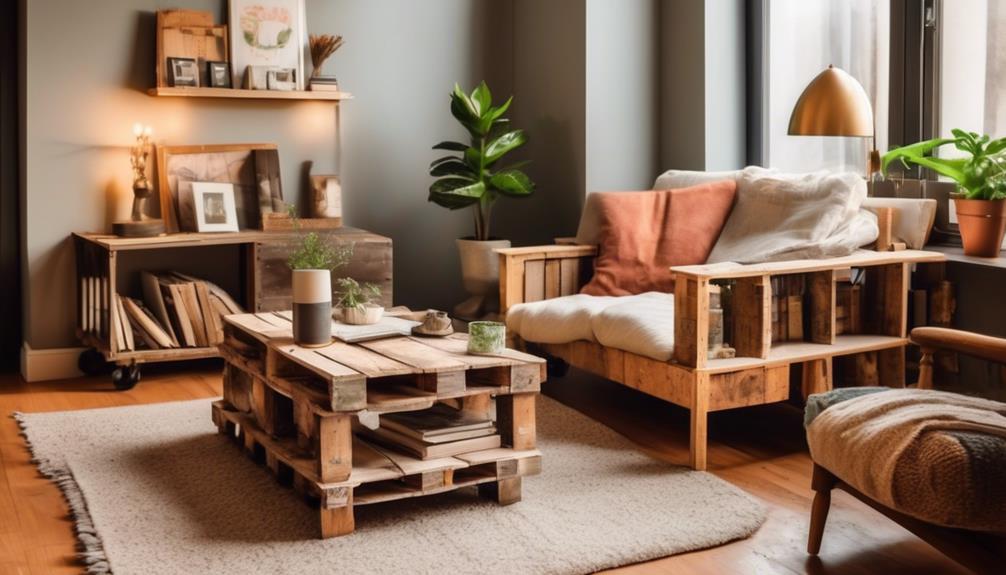
Enhance your home’s sustainability by incorporating upcycled and recycled furniture into your living spaces. By choosing to furnish your home with repurposed materials, you not only reduce the demand for new resources but also add character and uniqueness to your decor. When you opt for upcycled and recycled furniture, you’re making a conscious choice to support sustainable design techniques, thereby reducing your environmental impact.
- Evoke Nostalgia: Upcycled and recycled furniture often carries a sense of history and nostalgia. Each piece tells a story, invoking feelings of warmth and nostalgia, creating a cozy and welcoming atmosphere in your home.
- Express Individuality: Incorporating upcycled and recycled furniture into your living spaces allows you to express your individuality through unique and one-of-a-kind pieces. Each item possesses its own charm and personality, adding a touch of creativity to your home decor.
- Promote Environmental Consciousness: Choosing upcycled and recycled furniture promotes environmental consciousness and responsible consumption. It showcases your commitment to reducing waste and preserving the environment, setting an example for others to follow.
Smart Home Technology Integration
Consider integrating smart home technology into your living spaces to enhance convenience and energy efficiency. Home automation allows you to control various aspects of your home with ease. You can remotely manage lighting, thermostats, and security systems, making it more convenient for you. With energy monitoring features, you can track your energy usage and identify areas where you can make improvements to reduce your environmental impact and save on utility bills. Integrating smart home technology not only adds a modern touch to your living space but also contributes to a more sustainable lifestyle.
Smart home technology integration offers a range of benefits, including the ability to optimize energy consumption. By automating heating, cooling, and lighting systems, you can ensure that energy is used more efficiently, without compromising on comfort. Additionally, the ability to remotely control devices allows you to minimize energy wastage by adjusting settings based on occupancy and need.
Furthermore, smart home technology can enhance security and safety. With features such as smart locks, doorbell cameras, and motion sensors, you can monitor and secure your home more effectively. This not only provides peace of mind but also reduces the likelihood of energy-consuming incidents, such as leaving lights or appliances on when they aren’t needed.
Incorporating smart home technology into your home improvement plans is a cost-effective way to create a more eco-friendly and efficient living environment.
Frequently Asked Questions
How Can I Incorporate Renewable Energy Sources Like Solar Panels or Wind Turbines Into My Home Improvement Project?
You can incorporate renewable energy sources like solar panels or wind turbines into your home improvement project by first investing in energy-efficient appliances and using green insulation materials to maximize their effectiveness and minimize energy waste.
Are There Any Government Incentives or Rebates Available for Implementing Eco-Friendly Home Improvements?
Yes, there are government incentives and rebates available for implementing eco-friendly home improvements. You can take advantage of these programs when installing renewable energy sources, energy efficient lighting, and eco-friendly appliances.
What Are Some Innovative Ways to Incorporate Natural Light and Ventilation Into My Home Design to Reduce Energy Consumption?
To reduce energy consumption, consider skylight installation and energy-efficient window design to maximize natural light and ventilation. These improvements not only lower energy costs but also create a more sustainable and comfortable living environment.
Are There Any Eco-Friendly Alternatives to Traditional HVAC Systems for Heating and Cooling My Home?
For heating and cooling, consider geothermal heating and passive cooling techniques. Geothermal systems use the earth’s stable temperature, while passive techniques like shading and ventilation reduce reliance on traditional HVAC, saving energy and costs.
How Can I Properly Dispose of or Recycle Old Building Materials and Appliances During My Home Improvement Project to Minimize Waste?
When disposing of old building materials and appliances, you can properly recycle by researching local recycling centers and donation options. This minimizes waste and benefits others who may be able to reuse your items.
Conclusion
So there you have it – 5 cost-effective eco-friendly home improvement ideas to spruce up your living space while also helping the planet.
With energy-efficient lighting, water-saving fixtures, low VOC paints, sustainable flooring, and DIY insulation, you can make a big impact without breaking the bank.
And don’t forget about eco-friendly landscaping, upcycled furniture, and smart home technology to complete the eco-friendly transformation of your home.
Happy improving!
